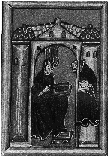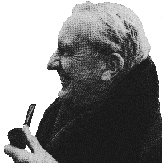
ámman îar reference grammar
ámman îar îarbampárma
(ammanyar yarparam)

Disclaimer: ámman îar is an artlang that I have been playing with off and on
for nearly 30 years. It will never be an IAL, nor does it have any pretensions in that direction.
It was not designed for ease of learning or recognition. It makes no attempt at a simplified grammar or syntax.
It has been purely an indulgence in my peculiar personal linguistic æsthetics.
There has been no attempt to cull words from any natlang. The vocabulary of ámman îar, except for conscious
borrowings from Elvish languages due to the early influence of the Dunedain, is
based on a set of roots that are computer generated. The software used to generate the
ámman îar vocabulary was developed by me and was used to enforce a phonological shape of the morphemes
that pleases my eye and ear as well as a hypothesized derivation from a
protolanguage called vulánayal I have no formal training in linguistics. Never
took a single course. I have read and enjoyed dozens of books on linguistics and what little I know, stems from my
understanding of those sources. If I misuse a linguistic term or concept, I welcome the correction.
However, I have not attempted to be linguistically rigorous (whatever that means), but have followed my sense of what feels
right for the language. As is the case with most conlangs ámman îar is still under
construction and will probably remain so forever. It is precisely this construction that intrigues me

Dedications

Hildegard von Bingen


This grammar is dedicated to Hildegarde von Bingen (1098-1179), Abbess of Rupertsberg, and
the earliest recorded conlinguist, in the hope that it will continue the
tradition she initiated with the creation of Lingua
Ignota (Unknown Language) so many
years ago.

John Ronald Reuel Tolkien


Secondly, I dedicate this grammar to the memory of that
consummate language cobbler, John Ronald
Reuel Tolkien (1892-1973), who's 'Secret Vice' I have shared for so many
years. His Eldarin languages were
an early inspiration and continue to be a significant influence on my own
constructed language work.

Internet Constructed Language Lists

I would also like to dedicate this text to those stalwart
conlinguists of the conlang, langdev,
and LANGMAKER mailing lists
whose very existence confirmed and legitimized this odd passion of mine as a
widespread, indeed international preoccupation.
The work exhibited on these lists has both inspired and invigorated the
development of ámman îar over the last several years.

Marlis Hundertmark-Bell

 And last but never least, I
dedicate this text, as I have my life, to my soul-mate, my life and raison d'être,
my wife Marlis Hundertmark-Bell who
has so gracefully accommodated the many hours I have spent in front of my
computer cobbling this grammar into creation. It no accident that the ámman îar
word for beauty is marlis.
And last but never least, I
dedicate this text, as I have my life, to my soul-mate, my life and raison d'être,
my wife Marlis Hundertmark-Bell who
has so gracefully accommodated the many hours I have spent in front of my
computer cobbling this grammar into creation. It no accident that the ámman îar
word for beauty is marlis.
I LOVE YOU!

All examples in this grammar are presented in the
following standard format:
English sentence.
amman iar translation
(nathya translation)
__________________________________________________________________________________________
amman iar translation
morpheme parse
glossed parse
part of speech parse
free translation
For example:
Galdor slew the dragon
i galdranne eleth en i feng ernurgoraen
galdor fengeir erucoreth
__________________________________________________________________________________________
i galdranne eleth en i feng
i galad =an -e el- -eth en i feng -0
the galad =masc -[A] assertive- -past agt.to.pat the dragon -[P]
det nam =gnd -erg mood- -tense ptp det n -abs
the Galdor did agt.to.pat the dragon
ernurgoraen
er- en- ur- coiro -ae -n
do- cause- not- live -agt/pat -actn/proc
agt- caus- neg- v -val -vc
slay
In
presenting the syntactic descriptions in the examples in this grammar, I was
faced with two possible alternatives:
-
Parse
only that portion of the example relevant to the subject under discussion;
or
-
Parse
the entire example.
It
seemed to me that the former was preferable; as it would highlight the exemplar
without undo clutter and distraction. However,
as my fluency in the language is something less than perfect, a fact that shames
me deeply, I found that I
needed to perform the latter in order to verify the
grammaticality of the examples. This was compounded by the
availability of an excellent tool for generating interlinear translations, ShoeBox,
available from SIL International (formerly known as the Summer
Institute of Linguistics) at www.sil.org.
I
have, therefore, consistently used the above format to provide full parses of
all examples. I have, however, highlighting those portions of each parse
that are relevant to the current context in red . I am of two minds concerning the efficacy of this
approach and may revise this scheme in future editions of the grammar if
sufficient negative feedback is received.
The nathya translations
that are included with each example are not parsed. This language is still
too little understood to permit rigorous parsing. I include these examples
to give the flavor of this related language and to serve as a starting point for
a complete reference grammar for nathya.

Reference Grammar Explorer

 The Pages of The Gray Wizard
The Pages of The Gray Wizard